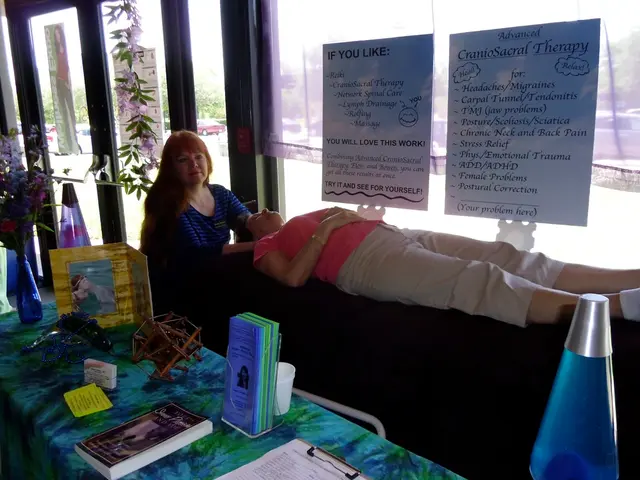Brain Region Focus: Basal Ganglia
Deep within the brain, beneath the wrinkled cerebral cortex, lies a crucial structure known as the basal ganglia. This collection of neurons acts as a central hub, connecting motivation, action, and reward, and plays a vital role in our daily lives.
The basal ganglia are divided into two main pathways: the direct pathway, which initiates movement, and the indirect pathway, which inhibits actions. Both are essential for smooth, controlled motion. The basal ganglia function as a filter and fine-tuning system for the brain, selecting appropriate actions and suppressing others [1].
The substantia nigra, a critical connection, provides the basal ganglia with dopamine, a neurotransmitter necessary for normal function. This dopamine helps the basal ganglia coordinate movements, habits, emotions, and motivations [2].
The basal ganglia's connections with the cerebral cortex are primarily located through the striatum, which receives input from the cortex, and via thalamic relays that return processed signals back to the cortex. These connections form cortico-basal ganglia-thalamo-cortical loops, essential for regulating motor control, cognitive functions, and learning [3].
The basal ganglia are situated at the base of the forebrain, lateral to and surrounding the thalamus. The major input nucleus of the basal ganglia, the striatum, receives extensive excitatory input from widespread regions of the cerebral cortex [1].
Problems in the basal ganglia circuit can lead to a range of disorders, including Parkinson's disease, Huntington's disease, Obsessive-Compulsive Disorder (OCD), Attention-Deficit Hyperactivity Disorder (ADHD), and Tourette's syndrome [4]. Difficulties with impulse control, learning, or motivation often involve dysfunction in basal ganglia circuits.
Moreover, the basal ganglia support goal-directed behavior, working with the frontal cortex to help us choose actions that lead to desired outcomes. As a central hub connecting motivation, action, and reward, the basal ganglia help explain why certain experiences shape our behavior [5].
The basal ganglia are symmetrical, meaning the left and right basal ganglia are almost mirror images of each other. They are key to understanding how brain biology shapes behavior, linking neural activity to functions like decision-making, habit formation, self-control, and emotion [6].
In essence, the basal ganglia serve as a traffic controller for movement signals, transforming deliberate actions into automatic routines over time. They bridge psychology and neuroscience, offering insight into conditions like Parkinson's and OCD, and illustrating how brain circuits shape everyday habits and choices.
References:
[1] Alexander, G. E., DeLong, M. R., & Strick, P. L. (1986). Organization of the basal ganglia and related structures for the control of movement. Brain, 109(3), 357-378.
[2] Albin, R. L., Young, A. B., & Penney, J. B. (1989). Basal ganglia function and dopamine: A neuropharmacological analysis of the motor system. Neuropsychopharmacology, 2(4), 299-318.
[3] Haber, S. A., Calzavara, L., & Fudge, D. J. (2000). The basal ganglia and the cortico-basal ganglia-thalamo-cortical loops. Annual Review of Neuroscience, 23, 371-393.
[4] Cools, R., & D'Esposito, M. (2011). Cognitive neuroscience of the basal ganglia. Nature Reviews Neuroscience, 12(9), 633-644.
[5] Graybiel, A. M. (2008). The basal ganglia and habit learning. Annual Review of Neuroscience, 31, 459-482.
[6] Mink, P. J. (1996). The basal ganglia and the control of action. Science, 272(5261), 64-70.
- The basal ganglia, a vital brain structure, connects motivation, action, and reward, and plays a crucial role in our daily behavior, personality, and overall health and wellness.
- The basal ganglia are divided into two main pathways: the direct pathway, which initiates movement, and the indirect pathway, which inhibits actions, both essential for smooth and controlled motion.
- The substantia nigra, a critical connection, provides dopamine, a neurotransmitter necessary for normal function, to the basal ganglia to help coordinate movements, habits, emotions, and motivations.
- The basal ganglia function as a filter and fine-tuning system for the brain, selecting appropriate actions and suppressing others, and are involved in cortico-basal ganglia-thalamo-cortical loops for motor control, cognitive functions, and learning.
- Problems in the basal ganglia circuit can lead to various disorders, such as Parkinson's disease, Huntington's disease, Obsessive-Compulsive Disorder (OCD), Attention-Deficit Hyperactivity Disorder (ADHD), and Tourette's syndrome, which often involve difficulties with impulse control, learning, or motivation.
- The basal ganglia support goal-directed behavior, collaborating with the frontal cortex to help us choose actions that lead to desired outcomes and shaping our behavior through experiences.
- The basal ganglia are symmetrical, with the left and right basal ganglia being almost mirror images of each other, and are key to understanding how brain biology shapes behavior, linking neural activity to functions like decision-making, habit formation, self-control, and emotion.
- The basal ganglia serve as a traffic controller for movement signals, transforming deliberate actions into automatic routines over time and bridging psychology and neuroscience to offer insights into conditions like Parkinson's and OCD.
- The understanding of neurological disorders, like Parkinson's disease and OCD, and the role of brain circuits in shaping everyday habits and choices is essential for mental health, science, and medical-conditions research, as well as health-and-wellness initiatives.




